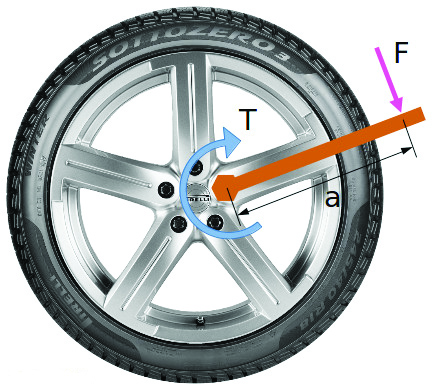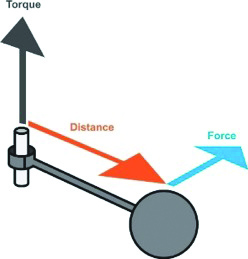TASK: Discuss with someone one way that torque, also called moment of a force, impacts your daily life.
- What is torque?
Looking at the picture on the right, you may be thinking about similar situations in which you were trying to rotate a screw, to roll up the pool cover, or to crack nuts.
In those situations, it seems like the force from your muscles may not be enough to create the needed rotation.
If we cannot increase our muscle force, how could we bring a body to easily rotate?
We need to first understand how torque works.
Torque, also called the moment of a force in physics, is the tendency of a force to rotate the body to which it is applied.
Torque is a measure of the force causing an object to rotate about an axis.
Just as force is what causes an object to accelerate in linear kinematics, torque is what causes an object to acquire angular acceleration.
When one opens a door, one pushes the side of the door farthest from its hinges.
Pushing the side closest to the hinges requires considerably more force.
Although the work done is the same in both cases (the larger force would be applied over a smaller distance), people generally prefer to apply less force – hence the usual location of a door handle.
- How torque is calculated:
Torque, specified with regard to the axis of rotation, is equal to the magnitude of the component of the force vector lying in the plane perpendicular to the axis, multiplied by the shortest distance between the axis and the direction of the force component. To make an object start rotating about an axis clearly requires a force.
But the direction of this force and where it is applied, are also important.
Take our example of the wheel:
If you apply a force perpendicular to the lever arm as shown, you will find that the greater the magnitude of the force, the more quickly the bolt spins. But if you apply the same force at a point closer to the bolt, the bolt will not rotate as fast.
The effect of the force is less: Where the force acts, as well as its magnitude and direction, affects how quickly the bolt spins.
Indeed, if only this one force acts, the angular acceleration of the bolt is proportional, not only to the magnitude of the force, but it is also directly proportional to the perpendicular distance from the axis of rotation to the line along which the force acts.
This distance is called the lever arm, or moment arm, of the force. The angular acceleration is then proportional to the product of the force times the lever arm.
Formula: Torque = Perpendicular Force x lever arm
- Applications of torque:
From simple mechanisms to complex machinery, torque applications are found everywhere.
One application is the wrench. A wrench is used to twist and turn a nut or bolt. This helps to loosen or tighten nuts.
When we are using a wrench to help loosen or tighten a nut around a bolt, a pulling force is applied across the rotational axis of the nut, which reinstates the torque to rotate it.
If you were to increase the torque for the turning of the nut across the bolt, you need to increase the amount of force applied, or increase the distance of the force application point to the pivot point by using a longer lever arm.
Another example is see-saws. See-saws are of great joy and entertainment to children, and they work on the principle of torque as well.
With a see-saw, two people usually sit on its two extreme ends.
The heavier person lifts the lighter one.
When the heavier person is closer to the pivot, the length decreases.
This reduces the amount of torque, which lifts the lighter person.
This is a perfect example of how the length from a pivot causes the amount of torque to change.
Torque is one of the most important concepts in physics everyone should be aware of.
Stay informed with The Namibian – your source for credible journalism. Get in-depth reporting and opinions for
only N$85 a month. Invest in journalism, invest in democracy –
Subscribe Now!









